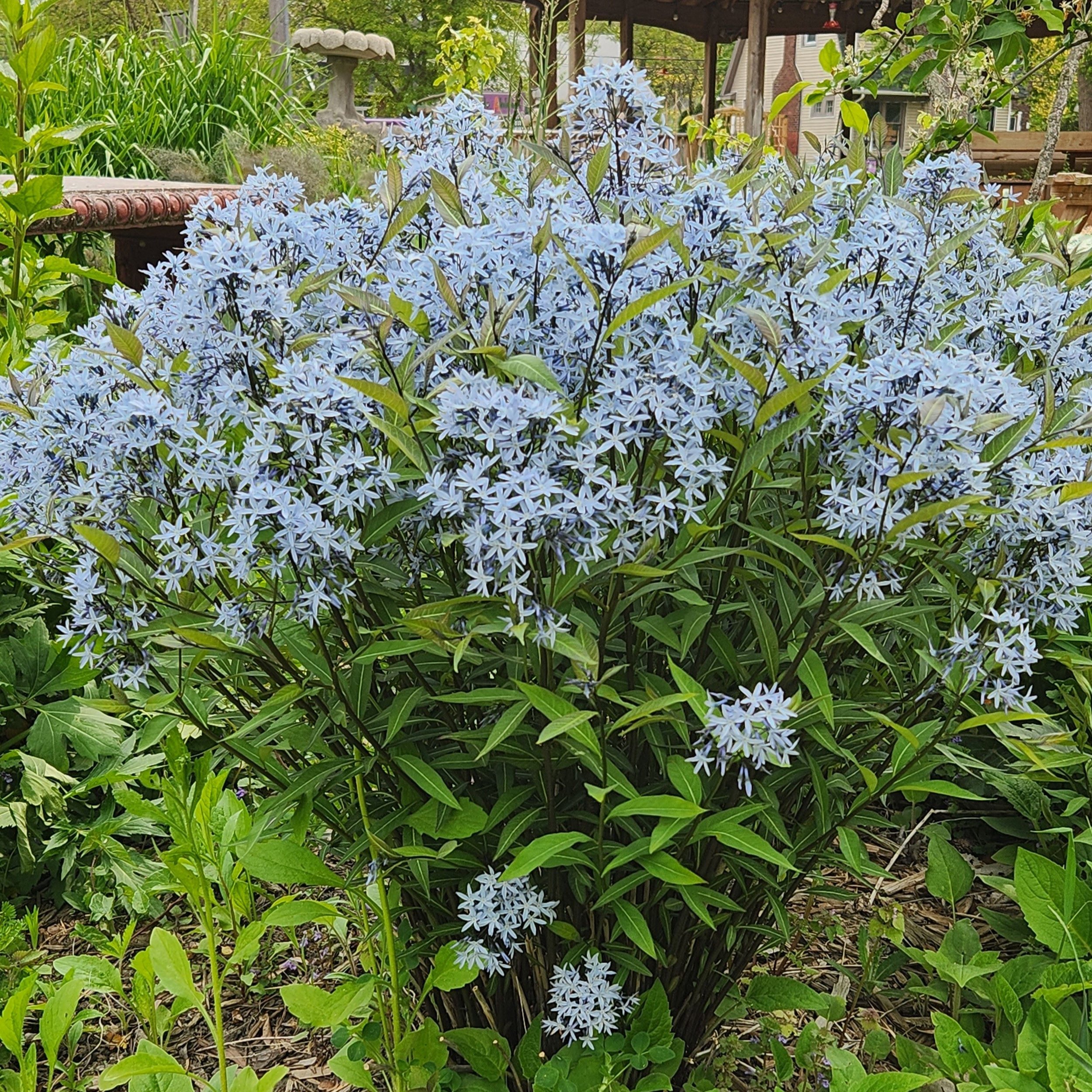 Image 1 of 9
Image 1 of 9

 Image 2 of 9
Image 2 of 9

 Image 3 of 9
Image 3 of 9

 Image 4 of 9
Image 4 of 9

 Image 5 of 9
Image 5 of 9

 Image 6 of 9
Image 6 of 9

 Image 7 of 9
Image 7 of 9

 Image 8 of 9
Image 8 of 9

 Image 9 of 9
Image 9 of 9










Amsonia Storm Cloud, Gallon Pot
Amsonia tabermaemontana, Gallon pot
FS to PS, average to poor soil, blooms June - early August 3’ x 3’, deer resistant
This shrub variety is a navitar of A. tabermaemontana or Eastern Bluestar. Navitars are natural variants forund in the wild and brought into cultivation. We first purchased Storm Cloud a few seasons ago from Walter’s Gardens and have loved it!
The dark-hued stems emerge in early spring and leaf out in a nice low forming clump. The light blue, somewhat silvery flowers open during a long bloom period. After the blooms fade. the shrub keeps it’s shape and nice foliage (see photo).
It thrives in a wide range of growing conditions. This really is a carefree native shrub, once established. We planted three, for a mass bloom effect that occurs, when you really need to see blooms!
The flowers are tubular in shape and attract long-tongued Carpenter bees, Humminbird Moths and Hummingbirds. Is a host plant for moths and butterflies.
Amsonia tabermaemontana, Gallon pot
FS to PS, average to poor soil, blooms June - early August 3’ x 3’, deer resistant
This shrub variety is a navitar of A. tabermaemontana or Eastern Bluestar. Navitars are natural variants forund in the wild and brought into cultivation. We first purchased Storm Cloud a few seasons ago from Walter’s Gardens and have loved it!
The dark-hued stems emerge in early spring and leaf out in a nice low forming clump. The light blue, somewhat silvery flowers open during a long bloom period. After the blooms fade. the shrub keeps it’s shape and nice foliage (see photo).
It thrives in a wide range of growing conditions. This really is a carefree native shrub, once established. We planted three, for a mass bloom effect that occurs, when you really need to see blooms!
The flowers are tubular in shape and attract long-tongued Carpenter bees, Humminbird Moths and Hummingbirds. Is a host plant for moths and butterflies.